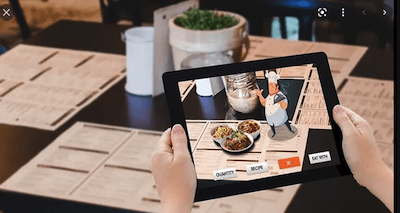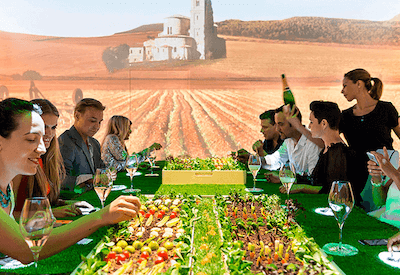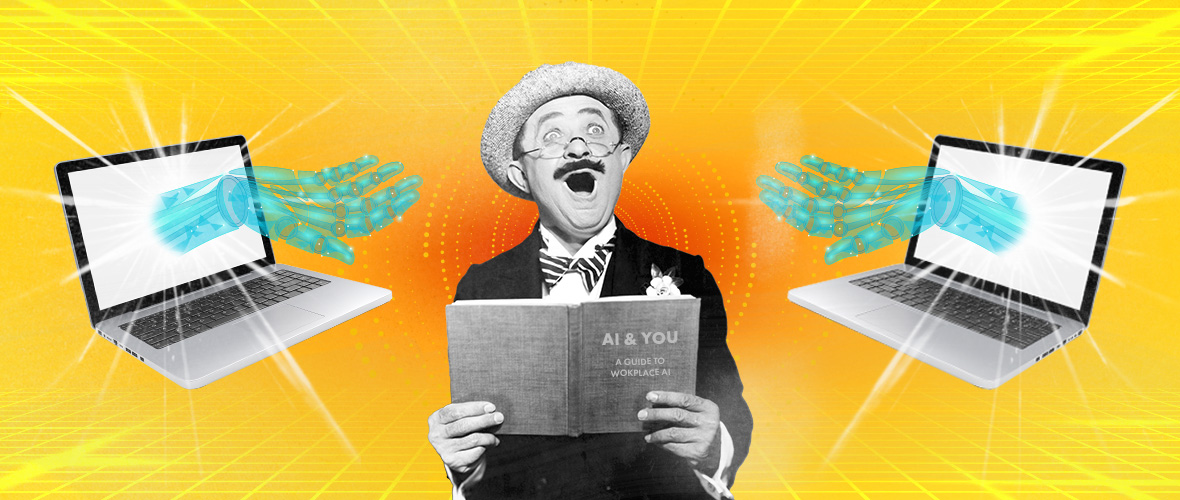Restaurant Marketing in Meta’s Metaverse
Facebook is known for delivering shocking and impressive technological feats, but CEO Mark Zuckerberg’s recent introduction of the metaverse and Facebook’s new parent company, Meta, has brought a slice of the future to 2021.
The metaverse, which is designed to be the future of e-commerce, gaming, remote work, fitness and even interpersonal relationships, opens the door for businesses in any industry to innovate and take advantage of new opportunities to engage with consumers. This online ecosystem serves as an extension of current augmented reality (AR) and virtual reality (VR) applications, and expands the possibilities for businesses to set themselves apart in innovative and unique ways. One arguably unexpected group to take root in the virtual world in recent years: the restaurant industry. From fine dining to fast food, these advancements have changed the way food is not only advertised, but experienced.
RESTAURANTS MADE META
Sublimotion in Ibiza, Spain has been running for the last seven years as one of the most exclusive, luxury VR food experiences. The multisensory space offers a futuristic, interactive audio/visual event for guests. While the price tag unfortunately puts Sublimotion out of reach for the average consumer, as technology advances, cheaper options have become more readily available to foodies willing to see food as an experience and not just a means of nourishment.
For those not quite ready to dine virtually, brands like Chipotle have found exciting ways to connect promotions to the digital world. This year, they even brought their iconic “Boorito” costume contest into the metaverse!
Aside from the exciting experiences, VR can also serve a practical function for restaurant brands. One example: virtual training programs. By digitizing onboarding, it is believed that restaurants will be able to cut back on the resources that are wasted in manual training and filter in better employees, helping to reduce turnover, a seemingly omnipresent issue in the industry lately.
WAYS TO DIGITIZE YOUR DINING
While there are a range of VR and AR capabilities currently available to brands, the hypothetical possibilities are endless. Check out just a few ways that restaurant brands could soon be connecting with tomorrow’s diners in the metaverse:
1. A Feast for your Eyes
Zuckerberg's presentation allowed us to understand that reality and virtual reality can now work together side-by-side. Brands could inject this seamlessly into their restaurants by allowing diners to swipe through an interactive VR menu, thus letting them explore additional options, discover ingredients, and even watch the preparation and presentation of their choices all in one destination that can be accessed from anywhere. To stay contact-free, restaurants could even allow guests to place an order directly from the virtual menu for dine-in or even delivery.
2. Meet in the Metaverse?
In the era of a global pandemic, meeting new people has become more challenging than ever. Fostering relationships has required more innovation, as seen in Zoom-fueled game nights and happy hours. It’s fair to say that dating via online apps could benefit from adding features to address these challenges. One potential solution? Dinner dates in the metaverse. With this new technology at their disposal, restaurants could partner with dating apps and delivery services to allow people on dates to experience the ambiance of a restaurant while taking their reservations virtually from the comfort of their own homes.

3. Making Experiences Equitable
Fans of high-end restaurants understand the exclusivity of the chef’s table, but few average consumers have actually gotten to experience it. The metaverse could provide more people with a seat at the table by using the virtual world to offer sneak peeks of coveted kitchen views to any excited foodie.
4. Creating Sensory Experiences
Gastronomic dining experiences have challenged our idea of what food is supposed to look like. These complex meals force us to question what we’re experiencing and enjoy food outside of the traditional ingredient list. The metaverse can take this one step further by allowing anyone from dedicated diners to immersive gamers to experience their favorite dish from a new perspective. Just imagine: In a virtual world, diners could be in an underwater submarine eating an exotic seafood delicacy – while in reality, they’re just consuming their favorite seafood alfredo from the restaurant around the corner.

When it comes to applications to explore within the metaverse, the opportunities are limitless. As the technology continues to evolve, diners, marketers, and restaurant brands alike will undoubtedly find themselves entrenched in virtually created immersive experiences more than ever before. However, it remains crucial to prioritize convenience, safety, and transparency while continuing to grow and explore the new possibilities that the metaverse will unlock.
BY: BETHANY BLOOM





